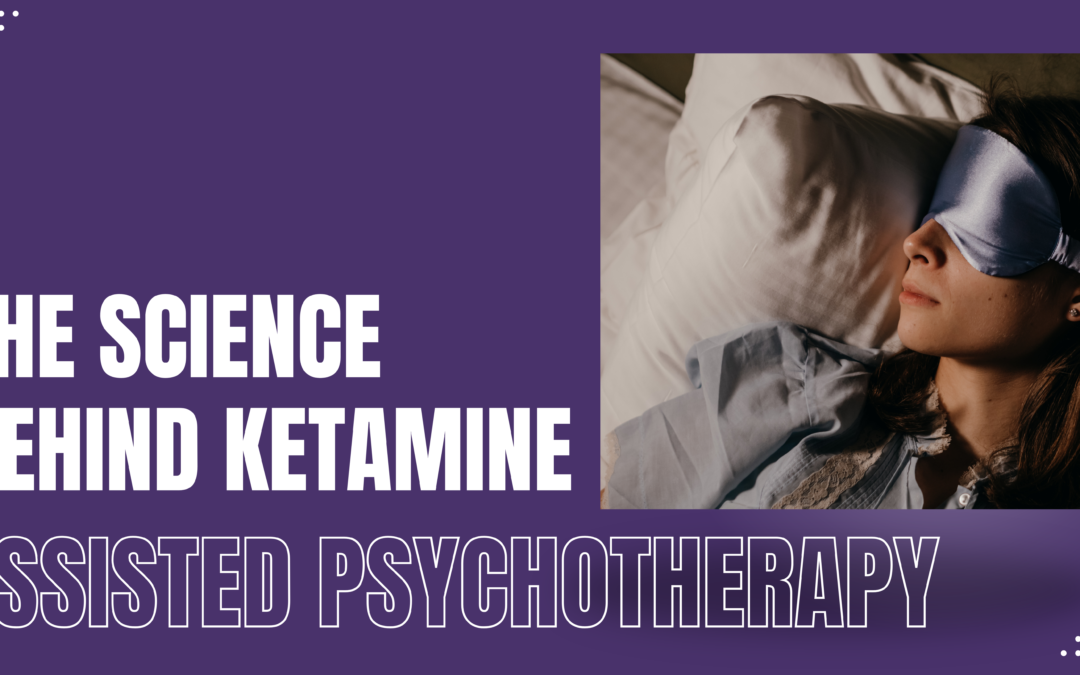In recent years, ketamine has gained attention as a groundbreaking treatment for various mental health conditions. While traditionally known as an anesthetic, its potential in psychotherapy has sparked interest and research. This blog will delve into the science behind ketamine-assisted psychotherapy (KAP), exploring how it works, its therapeutic benefits, and what patients can expect from this innovative approach.
Understanding Ketamine
Ketamine is a dissociative anesthetic that was first developed in the 1960s. It is commonly used in surgical settings for its rapid-acting anesthetic properties. However, researchers have discovered that, at sub-anesthetic doses, ketamine produces profound effects on mood and perception, making it a viable option for treating depression, anxiety, PTSD, and other mental health disorders.
Mechanism of Action
The exact mechanism by which ketamine exerts its antidepressant effects is not fully understood, but several key processes have been identified:
1. NMDA Receptor Antagonism: Ketamine primarily acts as an antagonist of the N-methyl-D-aspartate (NMDA) receptor, which is involved in the transmission of pain, memory, and mood regulation. By blocking these receptors, ketamine helps to increase levels of glutamate—a neurotransmitter that plays a vital role in synaptic plasticity and overall brain function.
2. BDNF Release: Ketamine administration is associated with increased release of brain-derived neurotrophic factor (BDNF), a protein that supports neuron growth and survival. This surge in BDNF may promote the creation of new neural connections, facilitating improved mood and cognitive function.
3. Connectivity Changes: Neuroimaging studies have shown that ketamine alters the brain’s connectivity patterns. Specifically, it appears to disrupt maladaptive networks associated with depression and anxiety while enhancing communication in areas related to emotional regulation and cognitive processing.
Ketamine-Assisted Psychotherapy: The Approach
In KAP, ketamine is used in conjunction with therapeutic practices. Here’s how it typically unfolds:
1. Preparation: Before the session, patients undergo a comprehensive evaluation to determine their suitability for ketamine therapy. This may include assessing their medical history, mental health status, and discussing treatment goals.
2. Administration: Ketamine is usually administered intravenously (IV) or through intranasal sprays. During the session, patients are monitored closely to ensure their safety and comfort. The dosage is carefully calibrated based on individual needs.
3. Therapeutic Setting: Patients often receive therapy in a controlled, comfortable environment. The altered state induced by ketamine can foster introspection and emotional exploration, allowing individuals to confront difficult feelings or traumas that might be hard to access during traditional therapy sessions.
4. Integration: After the effects of ketamine wear off, therapists help patients process their experiences. This integration phase is crucial, as it allows individuals to make sense of insights gained during the session and apply them to their daily lives.
Therapeutic Benefits
Research indicates several benefits associated with KAP:
1. Rapid Relief: Unlike traditional antidepressants that may take weeks to show effects, ketamine can provide relief from depressive symptoms within hours, making it particularly valuable for those in crisis.
2. Reduction of Suicidal Thoughts: Studies have shown that ketamine can significantly reduce suicidal ideation, offering hope for those who may feel there are no options left.
3. Enhanced Therapeutic Engagement: The dissociative effects of ketamine can help patients detach from negative thought patterns, facilitating deeper engagement in therapy and increased openness to exploring emotions.
4. Refractory Conditions: KAP has shown promise for patients who have not responded to conventional treatments, providing a vital alternative for those struggling with treatment-resistant depression and other disorders.
Considerations and Future Directions
While KAP shows great promise, it is essential to approach this treatment with caution. Potential side effects include dissociation, perceptual changes, and increased blood pressure, which require careful monitoring by trained professionals. Additionally, further research is needed to understand the long-term effects and optimal protocols for KAP.
As interest in KAP grows, it is likely that ongoing studies will refine our understanding of ketamine’s role in mental health treatment, helping to establish standardized practices and guidelines for its use in psychotherapy.
Conclusion
Ketamine-assisted psychotherapy represents a significant advancement in mental health treatment, combining the rapid effects of ketamine with the therapeutic process. By harnessing the unique properties of this compound, therapists can provide new avenues of healing for patients grappling with debilitating mental health conditions. As research continues to unfold, KAP offers hope for many seeking relief and a path toward recovery. If you or someone you know may benefit from this approach, consider consulting a healthcare professional experienced in ketamine therapy.
Always consult with a qualified healthcare professional before starting any new treatment and ensure that you receive care from experienced providers who understand the complexities of ketamine therapy. With ongoing research and clinical use, ketamine may well change the landscape of chronic pain management in the years to come.




